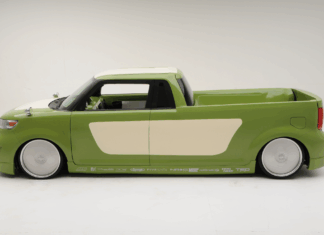
Battery electric vehicles are coming out faster and faster, but some cars like the BMW iX5 are taking the hydrogen route.
Hot on the heels of Honda’s announcement to build a hydrogen model based on the compact CR-V, BMW actually kicked off small-scale production of its own hydrogen model. The BMW iX5 is one prong of the automaker’s carbon-neutral plan over the coming decades, and it’s a culmination of the i Hydrogen Next concept that debuted back in 2019. While this will by no means replace BEVs in the pipeline (or ICE vehicles in the near future, for that matter), it will play a role in eventually transitioning away from burning fossil fuels in our daily drivers.


While some automakers have gone out of their way to build more or less bespoke fuel cell vehicles in the past (as Honda did with the original Clarity), BMW went the route of retrofitting its existing X5 to accept a FCEV powertrain. BMW’s Munich-based Research and Innovation Center took a standard model, and began by swapping out the floor. That swap allows space for the two hydrogen tanks, which feed the fuel-cell stack under the hood. Together, the tanks hold about 16 pounds of compressed hydrogen, while the cell pairs up to an electric motor and battery.

This FCEV delivers performance figures roughly equivalent to your standard X5 models, offering another zero-emissions alternative.
Overall, BMW says the iX5’s FCEV powertrain develops 374 horsepower — a bit more than your straight-six powered X5 xDrive40i. On the curb weight front, BMW’s H2-powered iX5 weighs in about the same as the plug-in hybrid X5 xDrive45e, or around 5,600 pounds. Acceleration is in the respectable category (under 7 seconds), as is the 118 mph top speed. Driving range, says BMW, is about 310 miles per the European WLTP cycle. EPA figures tend to be far less optimistic, so that roughly translates to somewhere in the 250-mile(ish) range, by our standards.
The iX5, like other hydrogen cars, aims to thread the needle between offering carbon-free option and satisfy those who need the convenience of quick refueling that fossil fuel-powered cars enjoy. BMW also cites a need to serve regions that face electrical grid capacity constraints — hamstringing widespread BEV adoption — and the expansion of hydrogen fueling infrastructure, at least in more than 40 countries worldwide.
That last point will likely determine whether the iX5, or indeed the hydrogen Honda CR-V, will be viable in the long-term. For the time being, BMW is building this hydrogen SUV as a test run. It will roll out a limited number of iX5s in select regions as a pilot program next spring.
Only two hydrogen-powered cars are available in the U.S. market at the moment: the Hyundai Nexo and the Toyota Mirai. Check out more on those below:






















